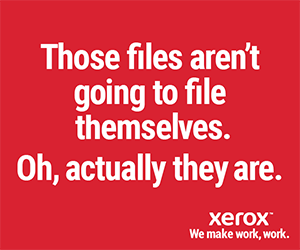
By Christopher Vitek, RPA Industry Veteran and Contact Center Specialist
Justifying the cost of technology solutions for your business can, at times, be challenging. But for contacts centers, just look at the numbers: Typical return on investment (ROI) for the use of software robots in contact centers ranges from 500 percent to 5,000 percent. We have not seen this type of ROI from any contact center technology solution since the introduction of interactive voice response (IVR) and computer telephony integration (CTI) in the 1990s.
RPA platforms provide users with two key benefits:
- robots automate repetitious, data-processing tasks
- robots bring AI to customer care before, during and after a customer interaction.
The following is a description of the ways that RPA can save labor dollars, eliminate mistakes, improve first contact resolution and/or increase revenue. Calculating ROI, however, can be challenging.
Gartner claims that the use of AI/ML in your contact center will yield a 20 percent lift in productivity (February 2020). I am not certain how they came up with that number. In my experience, AI/ML solutions are unique to every enterprise. As a result, it is difficult to calculate the precise benefit of an AI/ML solution in a general way. That does not mean it’s impossible, it just means that your organization, even in commodity industries, is different from any other enterprise and that variability is too great to support a one-size-fits-all approach to calculating ROI. Alternatively, calculation of ROI associated with the automation of manual data-processing tasks is much easier. That is why I am targeting this category in this article.
As a practical note, AI/ML-based solutions are an add-on to RPA-based, data-processing automation. Implementing data-processing automation across an entire enterprise creates the infrastructure to support AI/ML-based solutions. When hundreds or thousands of robots are deployed, they provide the unique ability to “structure” data that exists anywhere in the enterprise in any application and use that data in AI/ML solutions. RPA is the only solution with the tooling to make this happen.
What Evaluation Method?
There are two ways to evaluate return on investment. For simplicity, I use a Macro approach to analyze contact centers’ investment opportunity for using software robots. A Micro discussion can be supported. This however, would require specific use cases to be defined for each calculation. This can be done, but the use cases are often industry specific and not relevant to readers outside of a given industry. Alternatively, the Macro approach can be used in any industry and will take about 30 minutes. This will tell you if you should explore RPA further. Spreadsheets for Macro and Micro analysis are available upon request.
RPA’s Impact on Efficiency
The first calculation will be based on the amount of time your agents are engaged in manual data-processing tasks. Some contact center agents are engaged in data processing 25 percent of the time and others as much as 80 percent of the time. The key is to target the amount of time that can be returned to the agent with automation. If agents spend half their day on data processing it would be reasonable to assume RPA can compress this to 40 or 35 percent. In other words, saving approximately 10 to 15 percent of overall labor.
The next metric you need to consider is agent occupancy. Occupancy is a measure of the amount of time that an agent works during their shift. Typically, contact centers manage to an 80 percent occupancy rate. The reason I mention this is that a robot can work 100 percent of a shift and a human cannot. The equation to support this is: Labor Savings = % Time Saved/Occupancy.
The next value is cost of labor. This varies widely in the contact center business. Medical or technical support staff often make over $100,000 a year while banking wages may range from $25,000 to $30,000 per year. Whatever your number is, the equation will be: Total Savings from Efficiency = Labor Cost X Labor Savings
As an example, a 1,000-seat contact center with a projected 15 percent in labor savings with an 80 percent occupancy and a $32,000 average wage would yield a Total Savings from Efficiency of $4,000,000/year/1,000 seats. Typically, license fees for RPA would be $500/seat/year and delivery would be approximately the same. This yields a 300 percent ROI in year one and subsequent years ROI would be 700 percent.
Savings from Error Elimination
Error elimination is the next opportunity for improvement. Typically, contact centers endure error rates between 2 and 4 percent. Errors can be costly or not. Some errors generate hard expenses like chargebacks from shippers for undeliverable addresses or they can cause downstream work that is performed by back-office operations. Either way, there is a cost to errors. The unique thing about robots is that they do not make errors unless they are told to do so. The key benefit for contact center operators is that every efficiency use-case also eliminates errors.
Example: a 1,000-seat contact center with an error rate of 3 percent at a cost of $25/error creates $15,000,000/year in expense per 1,000 seats. Elimination of 10 percent of these errors yields an additional savings of $1,500,000/year/1,000 seats.
Cognitive Shift and First Contact Resolution
Several years ago, we discovered something very surprising with a banking customer. We implemented an automation that saved one minute per call and the client’s first contact resolution (FCR) rate improved by eight percent in two days. After checking to make certain that the reports were correct, we asked the agents why this was happening. Their response was that they simply had more time to talk to customers. In other words, their cognitive focus was not on the keyboard, but on the customer conversation. Computer navigation is cognitively challenging. Shifting cognitive focus to the customer has a direct impact on FCR.
The global average for FCR is 74 percent. For simplicity, I will use 75 percent for our calculations in this section. If we use the same 1,000-seat model and we can eliminate 10 percent of call-backs, then we eliminate 2.5 percent of calls arriving at the contact center. This translates to a savings of $800,000/year/1,000 seats.
Improved Self-Service Containment
Self-service platforms in contact centers often share one characteristic: They are all focused on simplistic transactions. In most cases, this is not only a limitation of the technology, but also a limitation of the implementers. Balance transfers in an Interactive Voice Response? No problem. Requesting copies of your checking statements for the last four month? More difficult.
One of the key architectural benefits of RPA is that it is portable. Additionally, these robots do not care if they are triggered by an agent at their desktop or by an IVR or chatbot session. In other words, every time you automate something on the desktop, the automation tools becomes available to implement in any self-service channel.
As a benefit, this opportunity varies significantly depending on industry and what self-service channels are available. While the above calculations are easier to support from a statistical perspective, this one is not. A 2 to 4 percent improvement in self-service containment is in the realm of probability in most industries that have containment rates in the 50 percent range. Containment Rates will be much higher, however, in industries like banking, where it can typically run in the 90 percent range. Use your best judgement. Containment benefits fall directly to the bottom line and can be substantial.
In our 1,000-seat example, a containment rate of 45 percent with a 2 percent improvement will yield a savings of nine FTE for a benefit of $288,000/year/1,000 seats.
Revenue Opportunities
Several of my customers have used robots to support cross-sell/upsell recommendations before, during and after customer interaction. The use of robots to make real-time recommendations to agents for cross-sell/upsell is one of the more advanced and late-stage solutions for software robots in the enterprise contact center setting. This is not the simple automation of existing data processing efforts, but the creation of new solutions that use AI to contemplate the customer, what they have already purchased, metadata related to the customer relationship and what products would be desirable for the customer. Estimates for additional revenue from these solutions are unique to every industry.
The use of robots for post-engagement cross-sell/upsell is much easier because you have more time to decide what the offer would be. Further, this is an opportunity go after abandoned shopping carts with robotic offers via email or text.
Either the real-time or post-engagement solutions can be based on simple logic (to start) and then add sophisticated artificial intelligence-based recommendations that can provide one-to-one targeting for each customer.
Though these may be the most impactful RPA solutions for enterprise contact centers, they are difficult to estimate due to their variability even within a given industry. AI-based next-best-action recommendations can have a profound impact on efficiency and error elimination. Interestingly, the more complexity you engage in your contact center, the greater the benefit and vice-versa. If you are in the Telco business, or any business where average handle time is more than 10 minutes, then these types of solution can reduce labor cost by as much as 30 percent.
Using a robot to re-offer product warranties to customers is a good example for post-engagement offers. Recently, I had a customer project that they could improve their warranty sales by $8,000,000 with a solution that offers a discounted warranty within a couple hours of the initial purchase.
In summary:
For a 1,000-seat contact center with an Average Handle Time of 288 seconds and 20,000 calls/agent/year and a $32,000/year wage we are looking at the following based on the above examples:
Rapid deployment of RPA with the use of low-code/no-code development tools allows anyone with the ability to build Excel Pivot Tables to build robots. This does not mean that craft-developers or IT departments should not be involved (See my previous article about IT Governance). However, it does mean that deliveries will be faster, easier to use, less expensive, less invasive, more secure, more easily supportable and have very positive return on investment.
If you liked this article, please sign up to RPA Today! Registrants will receive our free weekly RPA newsletter updating you on the most recent developments in the Robotic Process Automation, Intelligent Automation and AI space. In addition to news updates, we will also provide feature articles (like this one) with a more in-depth examination of RPA issues for end users and their enterprises.



